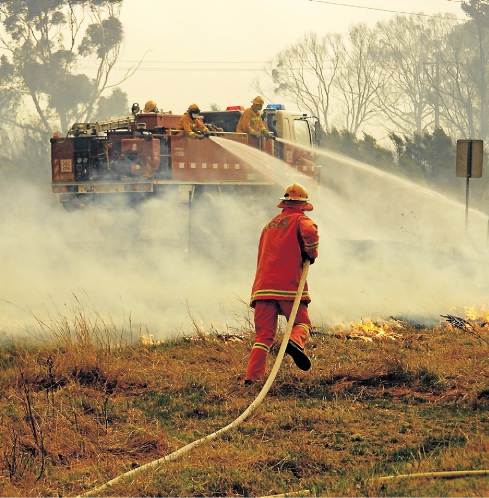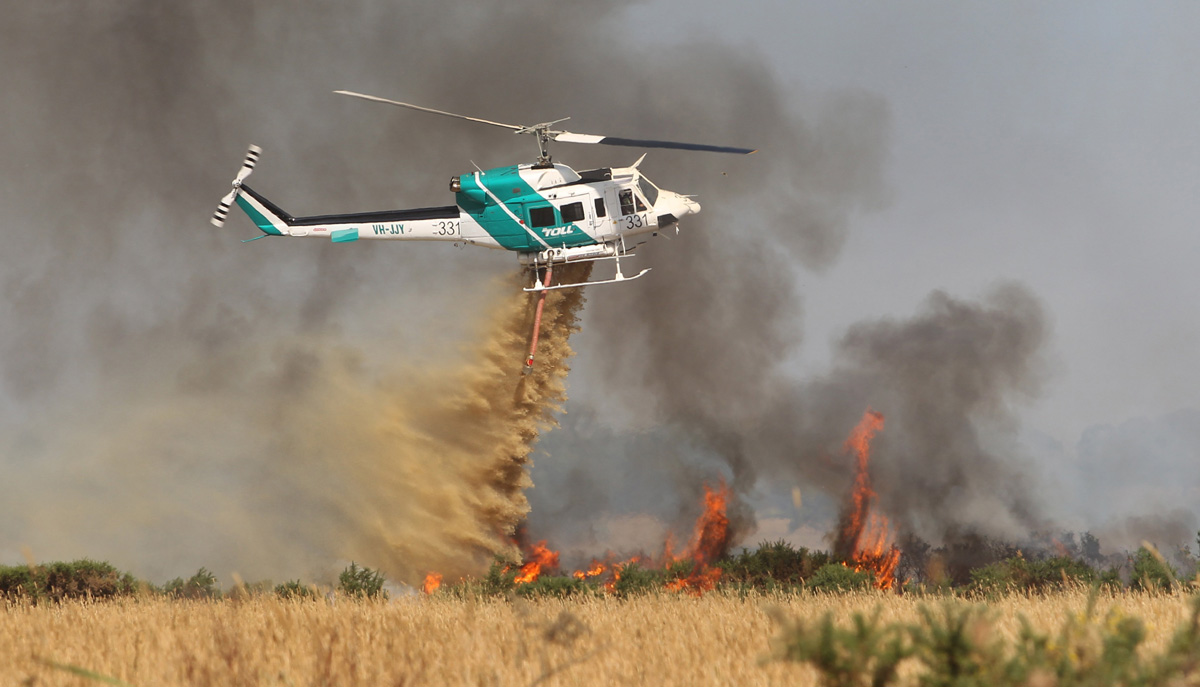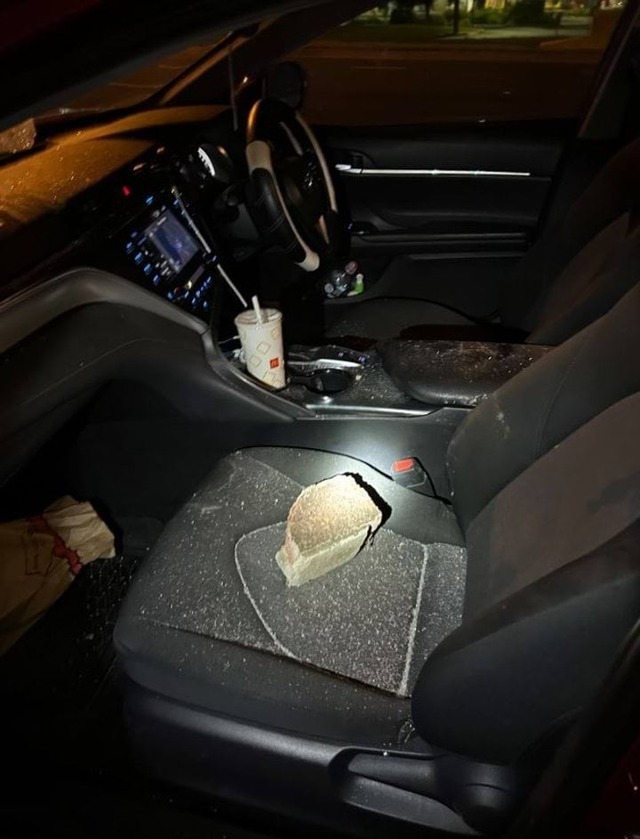It’s the start of summer and thoughts are of the beach, cool drinks and BBQs. But during the warmer months, there is always the lurking danger of a bushfire. TARA McGRATH talks to the Fire Services Commissioner office to see how the season is shaping up.
It has been one wet winter, as far as recent memory tells anyway, and the city’s water storages are as healthy as they have been for a decade.
But memory can be deceptive. It fails to remind us that those things to which we recently have become accustomed, like prolonged water restrictions and dry-weather football, are at odds with normal.
This year, weather and fire risk, are returning to long-term established patterns, much like those that preceded the fires during the summer of 1997. The previous winter — of 1996 — had been a soggy one. But that didn’t stop the flames roaring through 400 hectares of the Dandenong Ranges and killing three people.
Fire Services Commissioner Craig Lapsley says that in hindsight, the size of that particular fire was comparatively small: “But it had a very, very direct path.”
Mr Lapsley, whose focus is on the summer months ahead, says that in areas like the Ranges with a dense population area and ample fire-fuel, even those smaller blazes can have serious consequences.
“The thing that defines fires in those areas is that they don’t have to be very big. You can have a fire of a few hundred hectares but they will still have an enormous impact because of how densely we live — the fire is always going to be near homes.”
As people prepare to go on holidays to celebrate Christmas or the New Year, they’re being urged to consider what they can do to prevent themselves from being in a dangerous situation this summer.
This year marks the introduction of several new initiatives in the Dandenong Ranges and surrounds reccomended by the Royal Commission that investigated the horrific Black Saturday bushfires.
But despite the warnings — like sirens, text messages and community refuges — Mr Lapsley is urging residents not to be complacent.
“The shared responsibility and shared obligation still has to be there. People have to take responsibility for themselves, their actions, their preparedness.”
The Bureau of Meteorology has predicted a return to a “normal summer” — like we used to experience in the late 90s before the drought. That means above-average maximum temperatures and above-average minimum temperatures.
In turn, this means fuels like grass don’t take on overnight moisture, so the next day they will be in a drier fuel condition.
“January and February will be the peak of it but people need to be conscious of what happens in December as well,” Mr Lapsley said. “We’re not saying it’s absolutely doomsday, but fires will travel in the types of climates that are being forecast — travel and do damage.”
One of the simplest things residents can do to protect their property is to look over their backyard fence if they live next to parkland, Mr Lapsley said. “See what’s over it — how many people dump their rubbish over the back fence, how many people put their own grass clippings over the fence — because it can be out of sight and out of mind.”
John Schauble — manager of policy and planning for the Fire Services Commissioner and captain of the Sassafras-Ferny Creek fire brigade — said people in the suburbs often overlook the risks around them.
“People have this thing of ‘I live in the suburbs, it’s not my problem’. Well, in fact it is, particularly in newer developments around Rowville and places like that because you are exposed to parcels of bush around you,” Mr Schauble said.
He warned that anyone within 700 metres of a substantial bush area was at risk of a bushfire or ember attack. “Because a third of the population in the outer-easter suburbs changes every five years, it’s difficult to engage people who have only just arrived, as opposed to people who have been there 1000 years — it’s a challenge.”
However, the state’s emergencies bodies say they have learnt from the disasters of February 2009 — Black Saturday — and are trying to minimise those potential risks.
Mr Lapsley said an array of warning systems was being introduced: “The Royal Commission saw the warning systems as not reliable or sophisticated, so there’s been a lot of work to improve them — both reliability and options. Not everyone has a mobile phone, not everyone hears the siren, not everyone listens to the radio.”
For the first time ever, if you’re in an area that’s been threatened by a fire or similar emergency and your mobile phone network is Telstra, you’ll receive a text message alert.
Messages would previously only be sent to users whose billing address was in the affected area. Now, even if you live in Mount Waverley and you’re enjoying a picnic in Sassafras, you’ll receive an alert. Mr Schauble called the technology enhancement “groundbreaking”.
Another “first” for the Hills area is that three helicopters will be based at Healesville and Olinda this summer to fight fires from the air.
But they’re dwarfed in size by the incredible Elvis helicopter, based at Essendon — and smaller ones, perhaps sadly, don’t get a name.
Sirens at various CFA stations across the area have also been activated this year — a five-minute continuous siren signifies an urgent emergency in the area for which residents should seek further information. A 90-second siren means a fire unit is responding to an incident.
On the ground, community fire refuges will also be trialled over this summer. Lapsley said the office was hoping to learn from the initiatives in the Dandenongs.
One refuge will be built in Schauble’s home town of Ferny Creek — pure coincidence, he insists with a laugh — and all three locations for the refuges have been chosen based on existing infrastructure.
The Ferny Creek refuge is being established at the primary school, which was built after Black Saturday, so it already meets certain standards. When school finishes before Christmas, the building will be upgraded. “You wouldn’t build a concrete bunker for 200 people because that’s all you could ever use it for,” said Mr Schauble.
While Mr Schauble says they’re unlikely to be used in 2013, the pilot refuges will become a template in further years. “In each community it would work differently — you have a different make-up of people, different size and different locations.”
But as for now, Mr Schauble says, the area is tracking well come bushfire season. “But come late January, if we haven’t had much rain, people will need to be prepared.”
What do you think? Post a comment below.
CHECKLIST: BRACING FOR FIRE SEASON:
■ Have your photos & important documents stored digitally.
■ Make sure your insurance policy is paid up and a copy is kept at your workplace.
■ Maintain your garden by mowing or pruning.
■ Plan what you will do in the event of a fire near you.
—SOURCE: Office of the Fire Services Commissioner.
For all the latest breaking news, stay with this website. Also, follow the Weekly at facebook.com/dandenongjournal or on Twitter @DandenongJournal.








